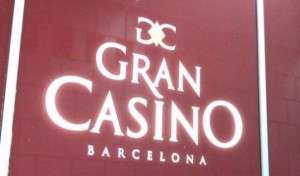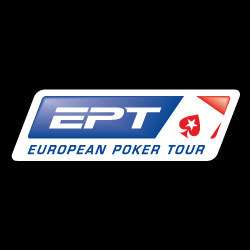Nutty Bubble Hand at EPT Barcelona
The post-World Series of Poker lull is over and the major tournament season is back underway. HAPPY TIMES. One of the most fun parts of a live tournament (those who get bounced would disagree) is the hand-for-hand period when the proceedings reach the money bubble. While tense and exciting, hand-for-hand is usually predictable: someone goes all-in, gets knocked out, everyone else cheers, play on. But on Sunday’s Day 3 of the European Poker Tour (EPT) Barcelona Main Event, the bubble took on an entirely different kind of flavor.
There were 240 players left and just 239 were going to make the money. Hand-for-hand play started. There was an all-in and a call. And then another all-in and a call. And then another. And another and another… 
When all was said and done, there were seven all-ins spanning six tables. All of the short stacks who weren’t all-in on the bubble hand had to be thrilled; the chances of every player who was all-in managing to double-up were miniscule, so it was almost guaranteed that everyone else watching and waiting was going to cash. Here, according to the report from PokerNews.com, was the order of events:
1) Francois-Charles Scapula and Daniel Studer both went all-in at the same table, called by 2013 World Series of Poker November Niner Sylvain Loosli. Loosli used A-K and a well-timed Ace on the turn to knock out both players on a single hand.
2) Farid Chati flopped what looked like the nut flush with A-2-3 of hearts on the board, and was all-in, but Martin Finger flopped a straight flush to send him to the rail.
3) Philippe D’Auteuil eliminated Randall Flowers.
4) Short stack doubled-up.
5) Short stack doubled-up.
6) Richard Dubini was all-in with Q-Q, but fell to Pawel Brzeski and his K-K.
So that is six tables, seven all-ins, and five eliminations on the bubble when only one elimination was needed to hit the payouts. There were additional prizes at stake, as well – the bubble boy was slated to receive a $5,300 seat into the upcoming Seminole Hard Rock Poker Open and a guitar. When the dust settled the question still remained: how is all of this handled?
The decision was made to divide the 236th through 239th place prizes equally amongst the five players who were eliminated. Thus, each player received €6,440 (€8,050 x 4 / 5). Since there were five bubble boys, the recipient of the bonus prizes was determined by an impromptu Sit-and-Go, which Scapula won.
There was a little bit of controversy as to why Studer was not counted out of the equation, as he had about 1,000 fewer chips than Scapula when the two were eliminated on the same hand by Loosli. In an interview with PokerNews, Neil Johnson, Head of Live Poker Operations for PokerStars Europe, said “We wanted to what was fairest and in the best interest of all the players.”
He explained that the complication of the bubble resulted from the combination of two different elimination situations with different rules:
The rarity here is the fact that every tournament has a rule that if two players go out on the bubble on the same table, the shortest stack is the one that’s eliminated first. So the deepest stack always gets the payout. And if they’re eliminated on two different tables, then we always chop the payout. None of the tours…actually have a third rule that says, “well what happens if both happen, when you get two players on one table and another player on another table?”
Johnson continued, saying that one opinion was that the shortest stack at the table with the double elimination should be gone. He did not think that was fair, though, positing the following scenario: “What if the two stacks on that table were 20 million [chips] and 19 million and the stacks at all the other tables were 200K. So now the 19 million chip guy, just because he was doing a war for the chip lead, now all of a sudden he’s on the bubble? When he had all those other guys covered by a ton. That’s not fair.”
He then discussed the opposite scenario, one in which the players eliminated at the same table had significantly fewer chips than the players eliminated at the other tables. In Johnson’s opinion, it also wouldn’t be fair for the winner of that hand to “jump to the front of the line” because he had the good fortune to be eliminated along with someone with even fewer chips.
Since there was not a perfect solution, Johnson said he and his fellow decision makers went back to “rule number one,” which is to “act in the best interests of the tournament,” and settled on the five-way chop plus the five-handed Sit-and-Go.
Johnson also told PokerNews that he has sent an e-mail to the other PokerStars tournament directors suggesting that they all come up with a new rule that would apply to this sort of situation in the future, even if it is rare. That way, there will be no ambiguity should it happen again.

















COMMENTS